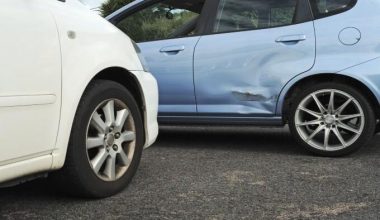Whether you’re in the market for a new automobile or auto insurance, you should be aware of the many types of coverage offered on a policy. There are several forms of automobile insurance coverage available to help protect you, your passengers, and your vehicle in the event of a car accident. Some of these coverages are required in your state, while others are optional. Knowing what is necessary in your state and what each helps cover can assist you in selecting the best coverage for your scenario. Here is a guide on the different types of car insurance coverage available for you to choose from.
Types Of Car Insurance Coverage
Car insurance is made up of various coverages that are designed to financially safeguard you in the event of an accident or damage to your vehicle. Certain types of car insurance are obligatory, while others are optional and provide additional protection.
Here are the common types of car insurance coverage:
#1. Liability insurance
Most states require auto liability insurance. Drivers must acquire at least the minimum level of liability coverage mandated by state law. There are two parts to liability coverage:
- If you cause an accident, bodily injury liability may help pay for the costs of another person’s injuries.
- Property damage liability may assist you in paying for harm to another person’s property while driving.
#2. Coverage for uninsured and underinsured motorists
If you are hit by an uninsured driver, uninsured motorist coverage may assist pay for your medical bills or, in some areas, vehicle repairs. If you are hit by an underinsured motorist, it indicates that they have automobile insurance, but their liability limits are insufficient to cover your medical expenditures. Depending on your state’s rules, underinsured motorist coverage may be useful in this situation.
Some states require uninsured and underinsured motorist coverage, while others make it voluntary.
#3. Comprehensive insurance
Comprehensive insurance may assist cover damage to your car caused by theft, fire, hail, or vandalism. If your vehicle is damaged by a covered risk, comprehensive coverage may pay for repairs or replacement (up to the vehicle’s real cash worth). There is a deductible with this plan, which is the amount you must pay out of pocket before your insurer will reimburse you for a covered claim.
Comprehensive coverage is normally voluntary, but if you’re leasing or paying off your vehicle, your lender may require it.
#4. Collision insurance
If you have an accident with another vehicle or hit an object, such as a fence, collision coverage may pay to repair or replace your vehicle (up to its actual cash value and minus your deductible).
Collision coverage is usually an option. Yet, your vehicle’s leaseholder or lender may require it.
#5. Medical payments insurance
If you, your passengers, or family members who are driving the insured car are harmed in an accident, medical payments coverage may assist pay for medical expenses. Hospitalization, surgery, X-rays, and other medical expenses may be covered.
Some states require medical payments coverage, while others make it voluntary.
#6. Personal injury insurance
PIP, or personal injury protection, is only accessible in a few states. PIP, like medical payments coverage, may assist in paying for your medical expenditures following an accident. Furthermore, PIP may assist pay other expenditures incurred as a result of your injuries, such as childcare costs or missed income.
In some states, personal injury protection is obligatory, whereas in others when it is offered, it is voluntary.
Other Types Of Car Insurance Coverage
Some other types of car insurance coverage include:
#1. Full auto glass insurance
With no deductible, full auto glass insurance can help pay for repairs to your car’s headlights, mirrors, and windows. Assume a thief enters your home by smashing your car window. It will cost $600 to repair. If you only have comprehensive auto insurance, you will have to pay the deductible before your coverage would cover the cost of replacing your windshield. With full glass coverage, the cost of fixing the window is fully covered, with no out-of-pocket expenses for you. Keep in mind that the availability of this sort of insurance varies by state and is not always available.
#2. Vehicle Towing Protection
Vehicle towing coverage pays for towing and labor costs connected with getting your vehicle back on the road after a breakdown. For example, if your car battery fails while driving on the highway, this coverage can assist cover the costs of having your car jump-started. Towing insurance is optional, and your state will not mandate you to obtain it.
#3. Personal Umbrella Insurance
Personal umbrella insurance covers more than just accidents and damages. It can be useful if covered damage exceeds the liability limitations of your house or auto insurance policy. For example, if you are sued and the damages exceed the liability limit on your primary coverage, umbrella insurance can help cover the difference. This policy is optional and not required by law in any state, but you may want to consider adding it to your existing coverage for added security.
#4. Gap Insurance
If your automobile is stolen or damaged, your gap insurance can help pay the difference between its real cash worth and the amount owed on your car loan. The majority of consumers purchase this coverage for leased or financed autos. This form of coverage is not required by state law, but if you have a car loan, your lender may need gap insurance.
#5. Rental Car Reimbursement Protection
Rental car reimbursement, commonly known as transportation expense coverage, assists in the payment of a rental car in the case of a covered comprehensive or collision loss. For example, if you drive off a slick road and collide with a tree, this coverage may pay for the costs of renting a substitute vehicle while your car is being repaired. This coverage is not required by law in any state, but it could be useful if you were in a car accident and couldn’t use your car for a while.
#6. Insurance for Rental Cars
If you’re renting a car for pleasure, you’ll require liability insurance. Rental car businesses typically provide collision damage waivers or loss damage waivers as rental car insurance. Signing them releases you from financial liability if the car is damaged or someone breaks into it. But, if you are in a car accident, your existing auto insurance may cover damage to your rental car. If you intend to hire a car, contact your insurance carrier ahead of time to ensure that you are protected.
What Is Not Covered In Vehicle Insurance?
#1. Other drivers in your car
While your insurance carrier may cover another driver who uses your vehicle, this is far from certain. Most insurance companies will want to know more about this other driver before agreeing to pay for any damage they caused in an accident. Do they share your home? Are you related to them? Do they have active auto insurance on their own car?
Those who live with you must typically be identified on your insurance policy in order to be protected if they drive your car. Several companies, in fact, require you to include or omit every individual of driving age who lives in your home, and if an excluded driver is involved in an accident in your car, they will not be covered.
Accidents may be covered by some insurance providers if the driver is a member of your family, but not a friend or acquaintance. Other insurance providers will provide limited coverage to anyone who has permission to drive your automobile. There is no uniform answer to whether an insurance company will cover other drivers, so consult with your insurance provider to ensure you understand the details of your policy.
#2. Routine repairs and maintenance
Car insurance does not cover basic maintenance, repairs, or general wear and tear on your vehicle, whether it is as simple as changing your oil or as sophisticated as replacing an oxygen sensor. These fees are considered part of owning an automobile, and the owner of the vehicle is responsible for them.
Even extended warranties and auto repair insurance do not cover basic maintenance or repairs, so drivers must budget for those extra costs in order to keep their cars in good working order.
#3. Personal items stolen from your automobile
Car insurance only protects your vehicle and any damage caused while driving. If your personal items are stolen from your vehicle or, worse, your automobile is stolen with your goods inside, your car insurance will only pay to replace your car, not your belongings. If you wish to file a claim for stolen property from your vehicle, you would do so through your renters or homeowners insurance policy.
#4. Exotic, classic, and performance automobiles
Conventional auto insurance policies are meant to cover a wide range of vehicles, but vintage, exotic, and performance vehicles require insurance coverage that is tailored to their special requirements. These cars are not only more expensive than conventional vehicles, but they are also more prone to be stolen and require specialized, costly repairs when they are damaged. Because to the additional costs and specialized needs connected with vintage, exotic, and performance cars, these vehicles cannot be insured under a standard auto insurance policy and must be covered by specialty insurance.
#5. Damage types that are not covered by vehicle insurance
Most individuals believe that if they have insurance, they would be covered for any damage they cause to their vehicle, but this is not the case. Your insurance coverage has limitations, which include:
#1. Damage that exceeds your liability limits:
If you are at fault in an accident, your liability limits do not protect you from being held liable for the damage you cause. Alabama, for example, sets a minimum liability threshold of 25/50/25. If you opt to carry the bare minimum of liability coverage and hit someone in a Range Rover, you could easily cause $60,000 in property damage but only be liable for $25,000 in property damage. You are still liable for the remaining $35,000 in damages after the insurance company has paid you the $25,000 from your policy.
#2. Normal wear and tear damage
While comprehensive and collision coverage will pay to repair damages caused by an accident, regular wear and tear is not covered. This implies that minor scratches, dents, rust, and chipped paint are not covered by your insurance coverage.
#3. Intentional damage (including DUI)
If you intentionally damage your vehicle, your insurance will not cover it. This encompasses minor offenses such as breaking a window because you’re locked out of your car, as well as more serious damage and fraud such as setting fire to your car for insurance money. Depending on the circumstances and the specifics of your insurance policy
Which types of insurance are legally required?
Except for New Hampshire, every state requires drivers to carry liability insurance for property damage and bodily injury. Depending on your state, more coverage may be required. Uninsured and underinsured motorist coverage, as well as PIP, may or may not be included.
Although comprehensive and collision coverage are not required by law in any state, many lenders do. In such circumstances, gap insurance may be required to cover the difference between what you still owe on the vehicle and its current market worth.
How to Select the Best Car Insurance Provider
While looking for vehicle insurance, you should consider a few recommendations to help you obtain the greatest coverage at the cheapest price.
#1. Search around
Insurance pros normally recommend that you obtain estimates from at least three insurers so that you can compare rates, coverage options, and discounts to select the best and most cost-effective carrier for your needs.
#2. Inquire about discounts
Most insurance companies provide discounts that you can use to save even more money. Inquire with potential insurers about which ones can assist you to save money on your premiums.
#3. Evaluate your coverage requirements.
Your auto insurance premiums will vary depending on your unique rating variables and policy options. If you’ve recently made a significant life change, such as purchasing a new vehicle or adding a teen driver to your policy, now is an excellent time to evaluate your coverage needs and compare rates to ensure you’re still getting the greatest coverage at the best price.
#4. Combine your policies
Most carriers who issue multiple lines of insurance provide savings to policyholders who bundle or acquire multiple policy types from them.
#5. Examine the financial strength ratings
Third-party rating agencies such as AM Best, Moody’s, and Standard & Poor’s can be used to assess an insurer’s financial strength rating. These organizations examine past data in order to assess an insurer’s current financial strength. A low rating may imply that a carrier will be unable to pay claims if it is flooded with huge amounts of damage during a major disaster, such as a hurricane.
#6. Look into customer service reviews
Third-party studies, such as J.D. Power’s, rank insurance providers based on customer service satisfaction, claims service satisfaction, and overall customer experience.
How Many Insurance Are There For Cars?
There are six major types of car insurance.
Is Car Engine Covered Under Insurance?
Engine repairs are typically not covered by automobile insurance unless they are directly related to an accident or other risk covered by the policy.
In Conclusion,
When it comes to vehicle insurance, there is no such thing as a one-size-fits-all solution. Where you reside, how you drive, and the vehicle you drive can all influence which type of car insurance policy is best for you and your wallet. Many online quoting systems will ask you questions about your location and driving patterns in order to recommend coverages worth considering. When comparing car insurance rates, make sure to select the same coverage for each quote so you can do apples-to-apples comparisons.
Related Articles
- What Is Full Coverage Car Insurance? What It Covers Explained
- HOW TO GET A CAR LOAN: What It Is and What You Should Know
- INSURANCE RENTAL CAR COVERAGE: When Do You Need It
- COMPANY CAR: Uses, Insurance, Leasing, and Guide.






